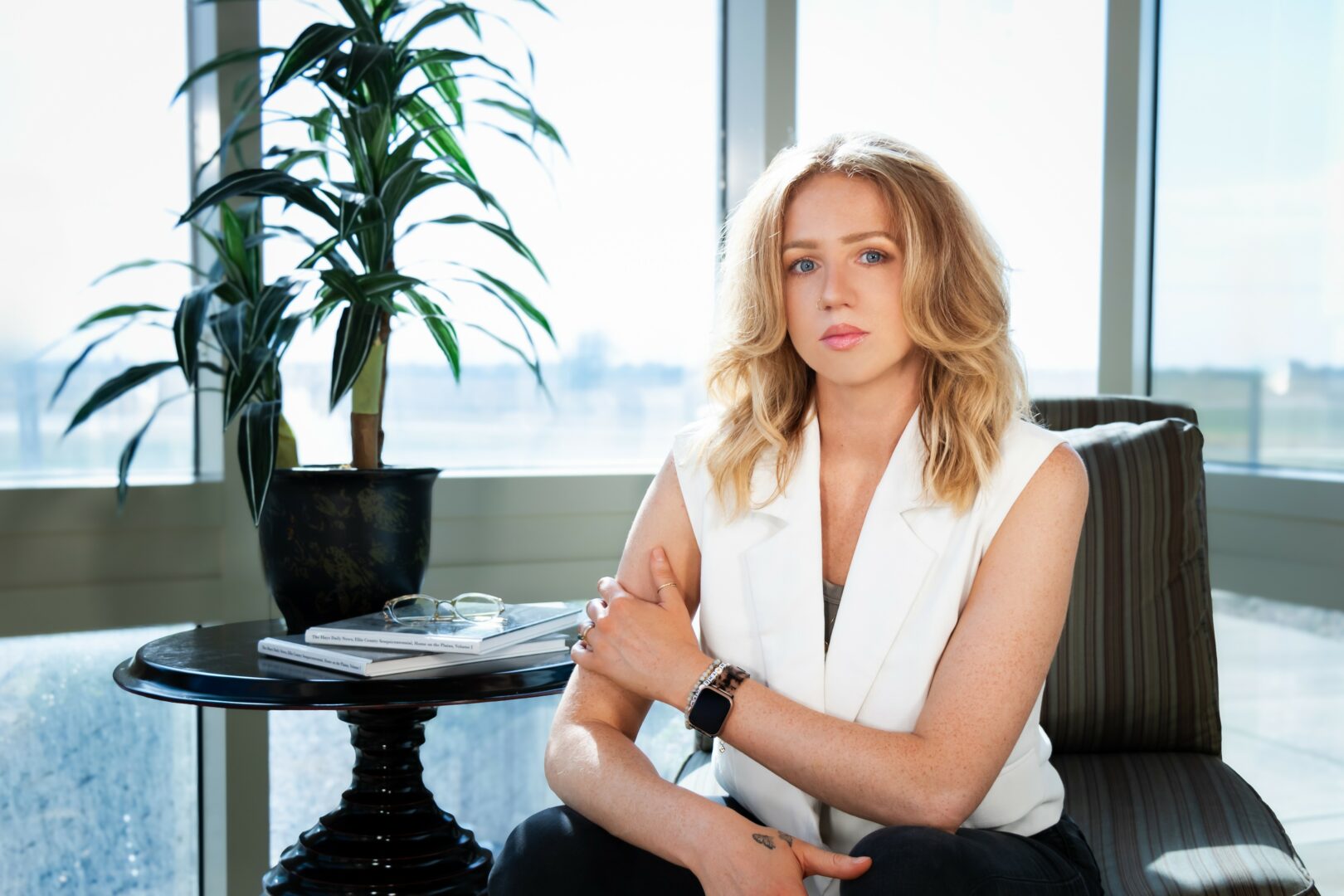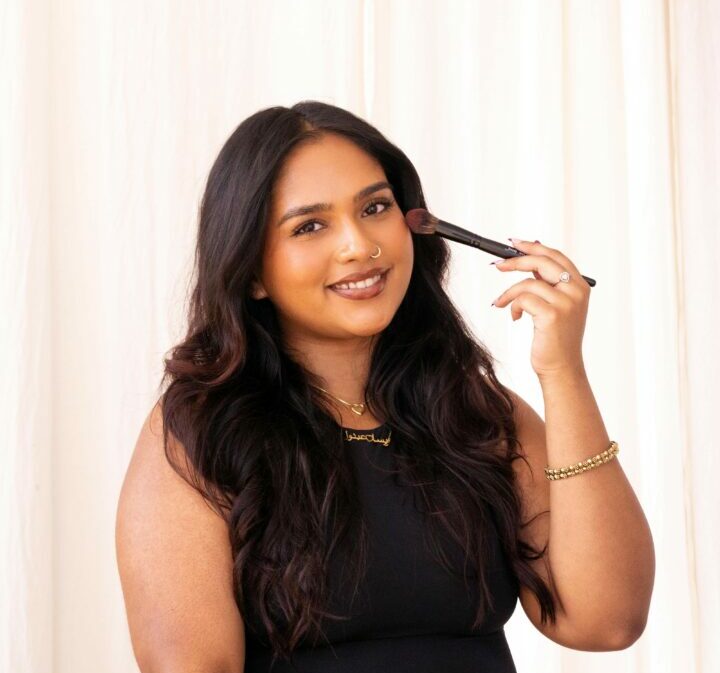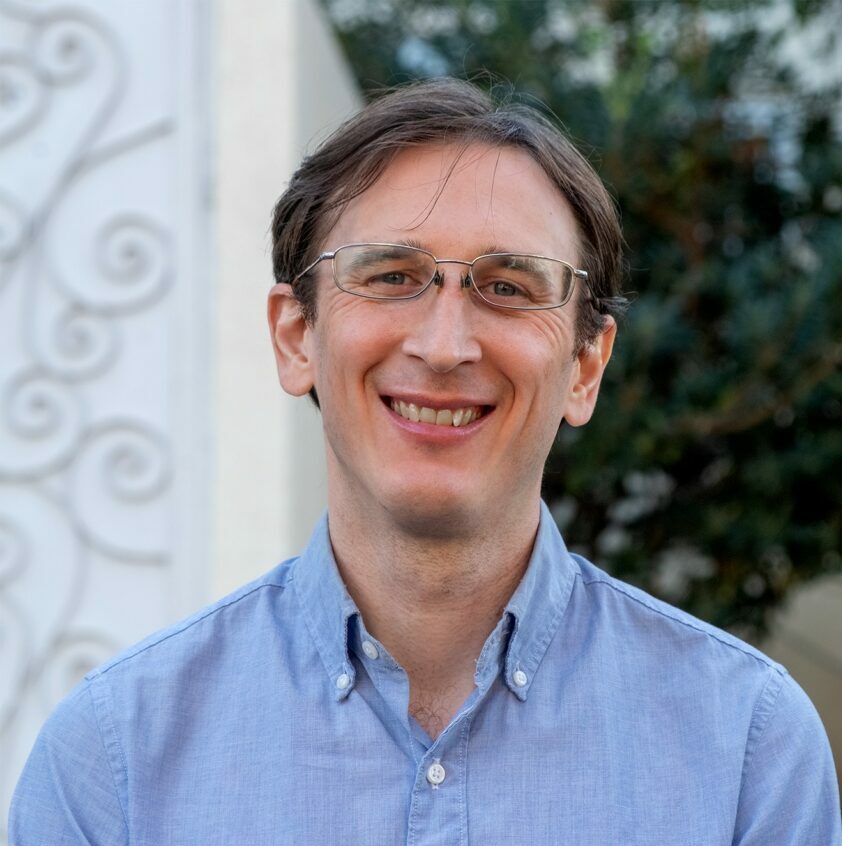We caught up with the brilliant and insightful Matt Gesualdi a few weeks ago and have shared our conversation below.
Matt, we’re thrilled to have you on our platform and we think there is so much folks can learn from you and your story. Something that matters deeply to us is living a life and leading a career filled with purpose and so let’s start by chatting about how you found your purpose.
There were many steps on the way to finding the purpose of my life and Proximity. I link the two because they affect each other in so many ways. Some of the steps were intentional and some took me by surprise.
Proximity, officially Proximity Studio, is the present state of an ongoing mission to bring touchable information to people with a spectrum of vision abilities, referred to as BVI (Blind/Vision Impaired), as well as reconnecting everyone with the idea that touching has always been one of the best ways to understand a 3D object.
My first tactile model was for a capstone project when I was finishing my Batchelor degree in Industrial Design. I had been a professional architectural model maker for about seven years and going back to school was going to be my way out. Although my first official paying job when I was 13 was helping to build a matte board architectural model for a well-known architect in Jacksonville Florida, and the fact that I never liked being in school, I thought getting a degree would at least get me a job where I got to wear better clothes to work.
The idea for building a tactile model came from seeing a model of a building while visiting Paris. Although the model had been touched by many people, it was worn and dirty, I don’t think it had been made with that intention. There were signs everywhere saying not to touch the exhibits. On the plane ride back to the US the idea of making models to be touched kept rolling around in my head. I needed a capstone project for school and making a different kind of architectural model seemed like a match made in heaven. Otherwise known as “an easy A”.
I spent the next few months at the Colorado Center for the Blind in Littleton, Colorado asking many ignorant-sounding questions to the BVI students there. After that I made a model of the May D&F Clocktower in downtown Denver. It’s a simple square shape for most of the building and at the roof it comes to a pyramid shape and is capped off with a bell tower. It’s a beautiful building and has come to be my favorite in Denver.
At that point what made it tactile was mostly that I used an extraordinary amount of internal structure and adhesive to make it stand up to being held. I received my “A” and many pats on the back. And for the next five years I didn’t think about it much. At that point the model wasn’t who I was, it was just what I’d done.
This next part is going to be strange for me to write. As many times as I’ve been asked what got me started in this field, I’ve never included this part. Somewhat because it has nothing to do with wanting to make tactile objects, but mostly because it’s personal and maybe even selfish.
A guy I had gone to school with when we were getting our associate’s in Industrial Design had died and I attended his funeral. I even said a few words about him, got some laughs and nods and felt good about honoring his memory at design school. Other people had stories about his work and family life, but many were about his innovations in design. Especially how many products he had invented and how many patents he’d won. We hadn’t stayed in touch much over the years, but I did feel sad so when I started to cry in my car, I let it out. After many minutes it seemed like something else was happening, so while the tears still ran, I started to wonder what else could be making me cry this much. And here’s the selfish part, I was crying because at that point in my life my funeral wouldn’t have included any accolades for design, invention or even innovation. The things I felt were important as a designer hadn’t happened.
I went home and immediately started to look through all my sketchbooks. The only thing that stuck out was the tactile architectural model. I remembered having fun making it, but I especially remembered talking to the people at the Colorado Center for the Blind. They were enthusiastic about my work and very welcoming of all my questions, even the poorly worded ones that I’m sure came off as either insensitive or ignorant.
There were many more steps and jumps of enthusiasm and encouragement, too many to write here, but I have always and only had a good time making objects that are specifically made to be touched. I have no doubt that this is my purpose in life, and I’ll keep doing it until I can’t. And then I’ll teach it.

Great, so let’s take a few minutes and cover your story. What should folks know about you and what you do?
Designing and building objects to be touched has many facets. Durability, cleanability, clear objectives, context, accessibility to name some. My biggest focus is the “why” though. I want people to learn from touching and that always means getting them close enough to touch and then giving them a reason to stay.
I had a model that I called my “5-second model”. People wanted to walk up to it, but it didn’t have enough to offer to make people stay much longer than five seconds. A tactile object should have a story to tell so people walk away with more knowledge than they had before.
My favorite story to tell is of scale. Scale is something many BVI people have missed out on. Even sighted people who don’t pay attention or don’t have resources can be oblivious to the scale of things. The May D&F Tower model was my first experience with how people react to learning scale. I’ve seen shock, fear, awe and tears when some Blind people become aware of how tall buildings are to themselves.
And that’s always my point to scale. How big or small is something compared to the thing I know the best, myself. I’ve built a series of models to show BVI and sighted people how big the state of Colorado is as compared to themselves. I call it “5 Steps to Colorado” and it uses something I call Incremental Scaling. The models take you, incrementally in five steps from you to a tactile map of Colorado. One of the ways this works is that you can always go a step or two backwards if you lose the thought or sense of being scaled down or up, depending on your perspective.
That jump of purpose for my tactile models is what made an expensive hobby into a true business. It goes back to the sense of purpose, but instead of my purpose it gives the tactile objects their purpose and hopefully leads to people wanting to hang around more than five seconds.

Looking back, what do you think were the three qualities, skills, or areas of knowledge that were most impactful in your journey? What advice do you have for folks who are early in their journey in terms of how they can best develop or improve on these?
In my journey of making tactile models, museum exhibits and other tactile experiences, I have gotten much use of the skills I had at the beginning of this journey; shop skills and empathy. Yes, empathy is a skill. I believe that we all have some level of compassion, but as I learned more about BVI people and what gaps there are in education and cultural exposure, my desire to offer better solutions increased and honed my empathy.
I also had to learn new skills. Part of marketing is self-promotion, and that was never a skill I had. I can send out flyers, emails, social media posts from the comfort of my house and feel that I am marketing. But what I had to learn is how to speak to people about what I wanted to do and what I wanted them to learn.
When I’m doing it correctly, it’s not self promotion, it’s promoting an idea that I am passionate about and want other people to feel the same. The best practice I got was going to Colorado Business Committee for the Arts events. It was an intimidating-sounding organization, but it’s the perfect group for me. People who think about the arts and all the different ways arts can be promoted, supported and thought about are people who think tactile objects, art or not, are interesting.
That didn’t make walking up to a group and introducing myself and what I do easy at first, but it became easier with repetition. You can have the cure for cancer, but if you never promote it and convince people to listen, it doesn’t get recognized.

All the wisdom you’ve shared today is sincerely appreciated. Before we go, can you tell us about the main challenge you are currently facing?
I think, my number one challenge is convincing museums that spending money on tactile exhibits, both temporary and permanent, is money well-spent.
There’s the accessibility aspect. Art and science have traditionally been in the able-bodied realm of how they are displayed in museums. Every time a museum makes an exhibit accessible in some way, the audience increases. This widens people’s experiences and potentially encourages more people to enter art and science pursuits. How have many Michelangelo’s and Enrico Fermi’s passed without being encouraged in or even exposed to art and science? For the future we need to consider that.
The other aspect which came to me a little late in the game is how families consider going to events, museums and other group outings. For example: If a family of four wants to go to a museum and one of the children is blind, the adults will tend to skip many places that won’t offer anything to the blind child. This excludes everyone in the group from learning and experiencing subjects beyond their everyday lives. This story has been told to me anecdotally many times by families. My challenge has been to relay these stories to museums as lost income. If four people skip the museum because of one member, the museum has potentially lost four entry fees and probably lost the family’s future attention.
When families know they can all get something valuable out of a museum, they will continue to come and they’ll tell others.
The potential for increased patronage isn’t limited to locals, there are websites for differently abled people that focus on travelling to destinations that offer accessible tours, museums and events of all kinds.
I think I’m getting the point across and my elevator speech gets refined every time I tell it. But many people still see accessibility and accommodation as an expensive option. The truth is, it’s most of our futures. At some point, whether age-related, genetics or injury, we can all join the club of disability, and the more places we have available to enjoy, the better all our lives will be.
Contact Info:
- Website: https://www.Proximity-Studio.com
- Linkedin: https://www.linkedin.com/in/mattgesualdi



Image Credits
All photographs by either Matt Gesualdi or Tari Ensign
so if you or someone you know deserves recognition please let us know here.




